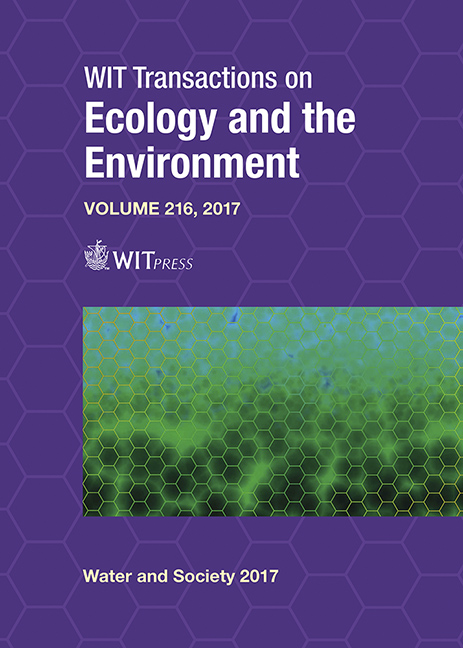MIGRAD: A WATER ALLOCATION MODEL FOR MULTI-RESOURCES IRRIGATION SUPPLY SYSTEMS IN THE CAPITANATA DISTRICT, ITALY
Price
Free (open access)
Transaction
Volume
216
Pages
12
Page Range
323 - 334
Published
2017
Paper DOI
10.2495/WS170311
Copyright
WIT Press
Author(s)
DONATO ZINGARO, IVAN PORTOGHESE, ALESSANDRO PAGANO, RAFFAELE GIORDANO, MICHELE VURRO
Abstract
The present work describes a model developed to interpret water allocation patterns in an intensive agricultural district of Southern Italy, supplied both by groundwater (at farm-scale) and surface water (managed by a local authority) with variable costs and specific operation. The model aims at evaluating the impact of some drivers (mainly the water cost) on water resources management and groundwater conservation at the district scale. The model is part of a Decision Support System (DSS) developed to investigate the main dynamics in an agricultural district, integrating in a model based on System Dynamics specific sub-modules (e.g. Crop Water Demand, Surface Reservoir Balance, Groundwater Balance and Farmers’ Behavioural Model). Semi-structured interviews were carried out with local stakeholders in order to define (i) the relationship between the irrigation source selection and the water tariff applied in the irrigation district, and (ii) the selection of groundwater, based on cost, to fulfil the irrigation needs. The volumes from surface water were evaluated during the model calibration phase according to the expected irrigation needs, and found to be significantly correlated to the water stock in the reservoir well before the start of the irrigation season. The validation phase showed a good agreement between measured and simulated reservoir irrigation uptakes in the period 2000–2012. It was mainly shown that the preference for a water source depends mainly on the ratio between the surface water tariff and the groundwater pumping cost at farm-scale. The results also demonstrated that a restrictive water tariff policy applied during drought periods produced a marked increase in the groundwater use instead of reducing the water-irrigation consumption. Globally the model allows to better describe the drivers influencing farmers’ behaviour and, thus, supports assessing the impacts of water policies, such as those related to water tariff.
Keywords
water allocation criteria, integrated water management for irrigation, impact scenarios, multi-resources water supply system





